A unique approach to looking at the future
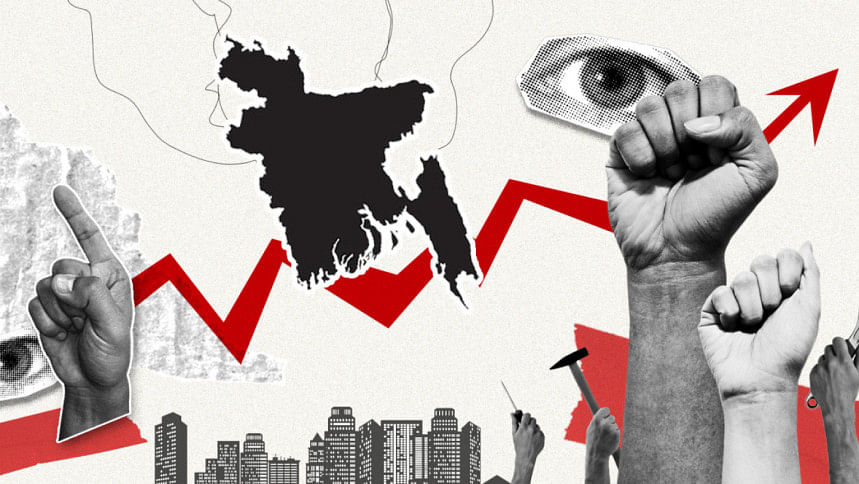
This is the first instalment of a three-part series based on a foresight analysis centred on Bangladesh's transition, which outlines the context and approach to 'foreseeing' Bangladesh's future a few months ahead.
Part 2: The plausible future facing the country
Part 3: Political alignment is key to a desirable future
"It is better to be roughly right than to be precisely wrong."
A year after the July uprising, the above-mentioned insight by John Maynard Keynes resonates deeply as Bangladesh faces growing restlessness for reforms, political consensus, and national elections amid volatile social, political and economic circumstances. It is maintained that the real risk lies not in being wrong but in acting too late. Anticipating what lies ahead, even if imperfectly, is a better choice than waiting for the "correct" answer in times of high uncertainty. Unprecedented times require an unprecedented approach to "foreseeing" the near future.
The uprising in July-August 2024, sparked by the reinstatement of government job quotas amid dismal job prospects, ended a 15-year authoritarian regime. The country's transition has been uneven since then. On the one hand, several economic indicators have shown improvement, with robust growth in remittance inflows, resilient export growth, and consolidation in foreign exchange reserves. Concurrently, economic performance continued to falter in terms of high inflation, stagnant private investment and sluggish employment. Moreover, law and order concerns persist with frequent episodes of mob violence. Intensifying geostrategic tensions in the region and disruptive developments across the globe (including the new tariff policy US and the war in the Middle East) are amplifying domestic economic uncertainties. Meanwhile, public expectations for national elections are growing, while political fragmentation—if not outright chaos—has only deepened since then.

Nevertheless, with national elections expected in early 2026, there is now a narrow window of opportunity for all state and non-state actors to act on the nation's reform aspirations. The country is confronted with several critical questions: What might the articulation of a minimum (working) consensus on reforms look like in the next few months, in the run-up to the national elections? What would be the defining economic, social and political conditions in such a future? What will the roles of key actors be in enabling a pathway to a minimum (working) consensus on reforms?
The current foresight analysis discusses the possibility of articulating a minimum working consensus for reforms, not their delivery, in the upcoming months. As such, the aim is to anticipate potential developments that may underpin successful articulation of a minimum (working) consensus for reforms ahead of the national elections. It also aims to help identify the potential strategic moves of relevant key actors to realise their respective "desirable" outcomes.
The critical questions are guided by the assumption that a country's political space and the stability of its economic circumstances are mutually reinforcing—engaged in a dialectical relationship, where each shapes and is shaped by the other. However, in a country where reliable and relevant data and information are scarce, waiting for facts and figures that adequately reflect economic realities risks missing crucial opportunities for timely intervention. Instead of traditional forecasting, a method that relies on extensive historical data, this analysis uses "foresight." This approach systematically leverages expert and non-expert knowledge and experiences to build potential "futures" and is better suited for data-scarce and volatile environments. There are many foresight approaches, such as horizon scanning, stakeholder analyses, and the Delphi method, which help develop multiple potential futures and explore the various opportunities and challenges that could occur in unpredictable circumstances.
Foresight offers advantages in situations with limited or absent relevant data and evidence, but it also has its fair share of critics. First, it has been criticised for its reliance on subjective judgements and the perceived lack of a coherent theoretical foundation. Second, communicating and engaging stakeholders and decision-makers with findings from a foresight exercise can present challenges. Third, the approach's heavy reliance on qualitative methods has raised concerns about the potential for foresight scenarios to be influenced by biases or specific perspectives.
To tackle these inherent challenges, we employed an "integrated" foresight approach, combining horizon scanning, Delphi survey, and a scenario building workshop (Figure 1). Typically, foresight is used for building future scenarios at least 10-30 years into the future; however, this analysis focuses on the period leading up to the national elections. As such, to adapt to "foreseeing" in the short term, the future scenarios are built around social, political and economic factors that are both critical to the country's context and certain in their implications in the coming months. Moreover, given the accelerated pace of national, regional and global change, scenarios may become outdated. To mitigate this, the future scenarios are continuously validated for relevance through continuous stakeholder engagement and feedback.
The first step, "horizon scanning," involved desk research to identify emerging trends, issues, and "drivers of change"—the underlying domestic or external forces potentially shaping Bangladesh's prospects of articulating a minimum (working) consensus on reforms. Drivers can be said to be the root causes of trends, while a "weak signal" is the early indicator of a trend that has disruptive potential to grow in scale and geographic distribution.
Second, "key informant interviews" were held with experts in the field of politics and governance to supplement horizon scanning. The third step was a "scenario building workshop," which was held in April 2025. This workshop, where we employed the Delphi method, brought together 16 (multidisciplinary) experts spanning economists, political analysts and politicians, and representatives from the private sector as well as civil society and NGOs. These experts came together to develop multiple plausible (future) scenarios, along with associated opportunities, challenges and strategic options. However, it is worth noting that the scenarios developed reflect the information and context available at the time of their development.
Finally, a set of dedicated "validation meetings" began with a session with a broad group of international development partners, followed by separate meetings with three groups of leading political parties. These meetings provided the final inputs for fine-tuning the scenarios obtained.

From extensive horizon scanning, key informant interviews, and expert feedback during the scenario-building workshop, 34 drivers—13 economic and 21 sociopolitical drivers—were identified. Experts scored each driver in two rounds across three dimensions: i) how "certain" is this driver to produce an outcome within the next 6 months?; ii) how "critical" is this driver in the context of Bangladesh's current sociopolitical and economic landscape?; and iii) how relevant is this driver to influence or shape the articulation of a minimum working reform consensus?
Curiously, the higher-ranked drivers were mostly from the sociopolitical group rather than the economic one, scoring particularly higher in the areas of "criticality" and "relevance." This was perhaps a reflection of the uncertain and fragmented sociopolitical landscape at the time of the workshop.
More importantly, the close scores of many drivers suggested there was no clear front-runner. In light of this, the experts consolidated the closely scored drivers into two composite drivers: one for economic (horizontal or x-axis) and one for sociopolitical (vertical or y-axis) factors (Figure 2). This approach did not exclude the remaining important drivers; instead, they were incorporated as cross-cutting dynamics shaping each of the plausible future scenarios.
The resulting 4x4 scenario matrix is defined by these two composite drivers. The horizontal axis, Economic Conditions, captures three interrelated elements: the cost of living in Bangladesh; the availability of meaningful jobs; and the extent of labour discontent across the country. It was first debated whether there should be emphasis on the availability of decent jobs. While "decent" jobs typically entail employment that offers minimum wages, job security, and standard worker safety, it is considered not to fully capture the realities of the current job market in Bangladesh. Many of the available jobs are considered not to match the qualifications, skills or expectations of new labour market entrants. As such, many of them experience underemployment or prolonged periods of unemployment due to a lack of meaningful jobs.
The vertical axis, Political Alignment, represents the agreement on scope, sequencing and speed of reforms; a consensus on the timeline for national elections; and the level of inclusivity in electoral processes. Here, "inclusivity" does not only refer to the participation of the immediate past ruling party in the upcoming national elections, but the participation of all political parties to compete and all citizens to vote without fear of repercussions or intimidation.
The scenarios emerging from this exercise offer a lens through which to understand the rapidly shifting sociopolitical landscape within Bangladesh and the future of reforms. The synthesis of economic and sociopolitical drivers into two composite drivers of change—Economic Conditions and Political Alignment—has set the ground for developing four distinct future scenarios. As the country edges closer to the national elections, examining potential future trajectories and recognising the related weak signals may help key actors not only anticipate the future but also act in time to shape it. The second instalment will unpack four different future scenarios that may emerge, along with the early signs of change—or weak signals—that may suggest the future trajectory we may be headed towards. Some scenarios may emerge as the most desirable future, marked by stability, while others may be completely improbable. Others may be closer to reality than they appear.
Debapriya Bhattacharya is distinguished fellow at the Centre for Policy Dialogue (CPD).
Najeeba Mohammed Altaf is senior research associate at CPD.
Towfiqul Islam Khan is senior research fellow at CPD.
Views expressed in this article are those of the authors only and do not necessarily reflect the views of CPD or any other organisations with which the authors are associated.
Follow The Daily Star Opinion on Facebook for the latest opinions, commentaries and analyses by experts and professionals. To contribute your article or letter to The Daily Star Opinion, see our guidelines for submission.
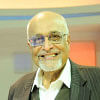


 For all latest news, follow The Daily Star's Google News channel.
For all latest news, follow The Daily Star's Google News channel. 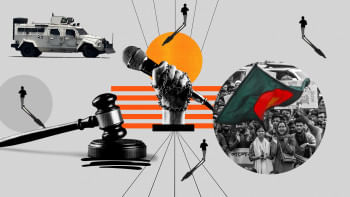







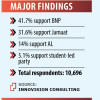

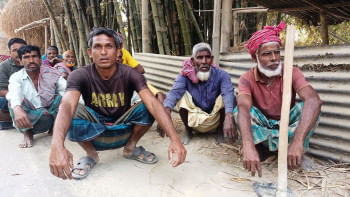
Comments